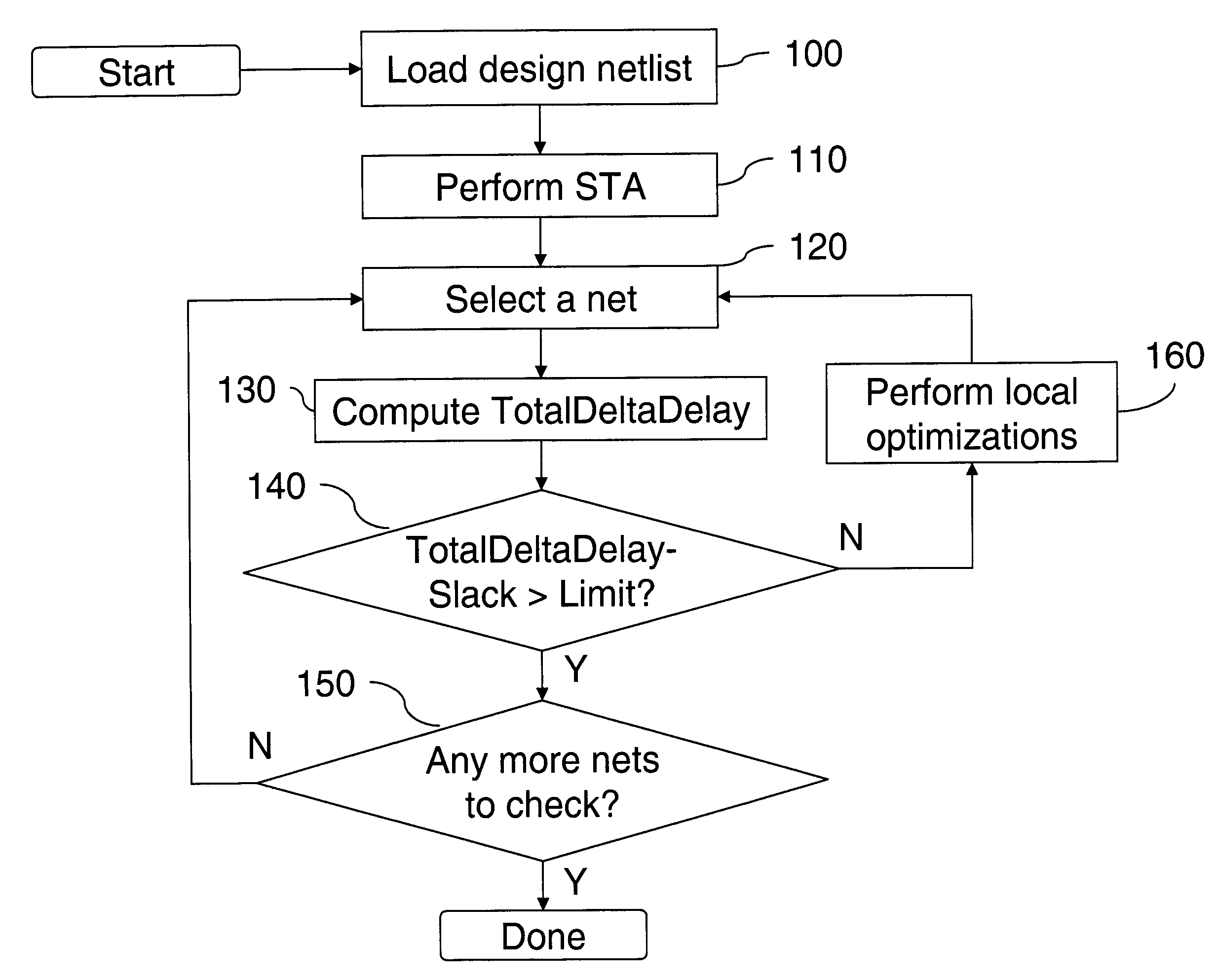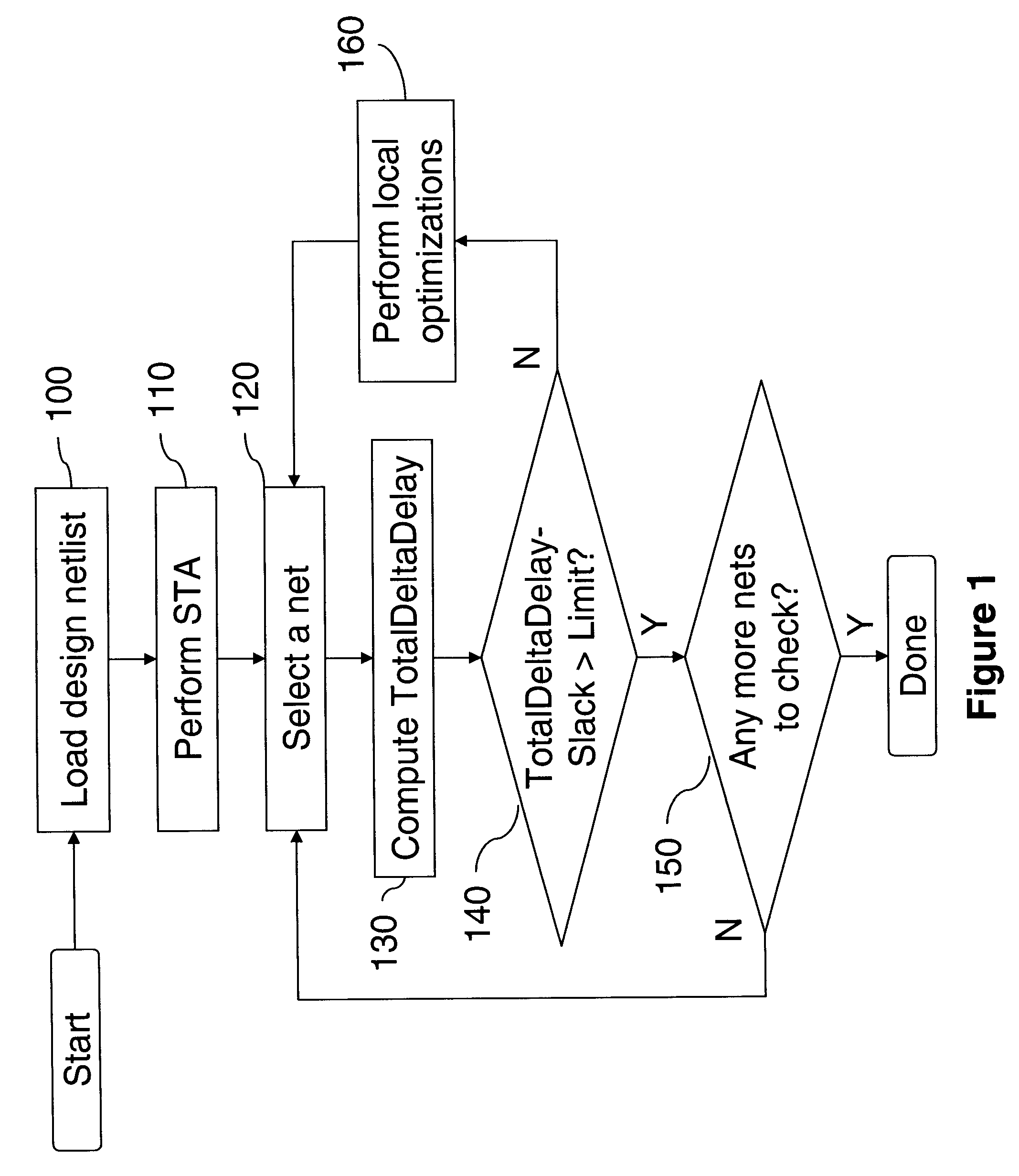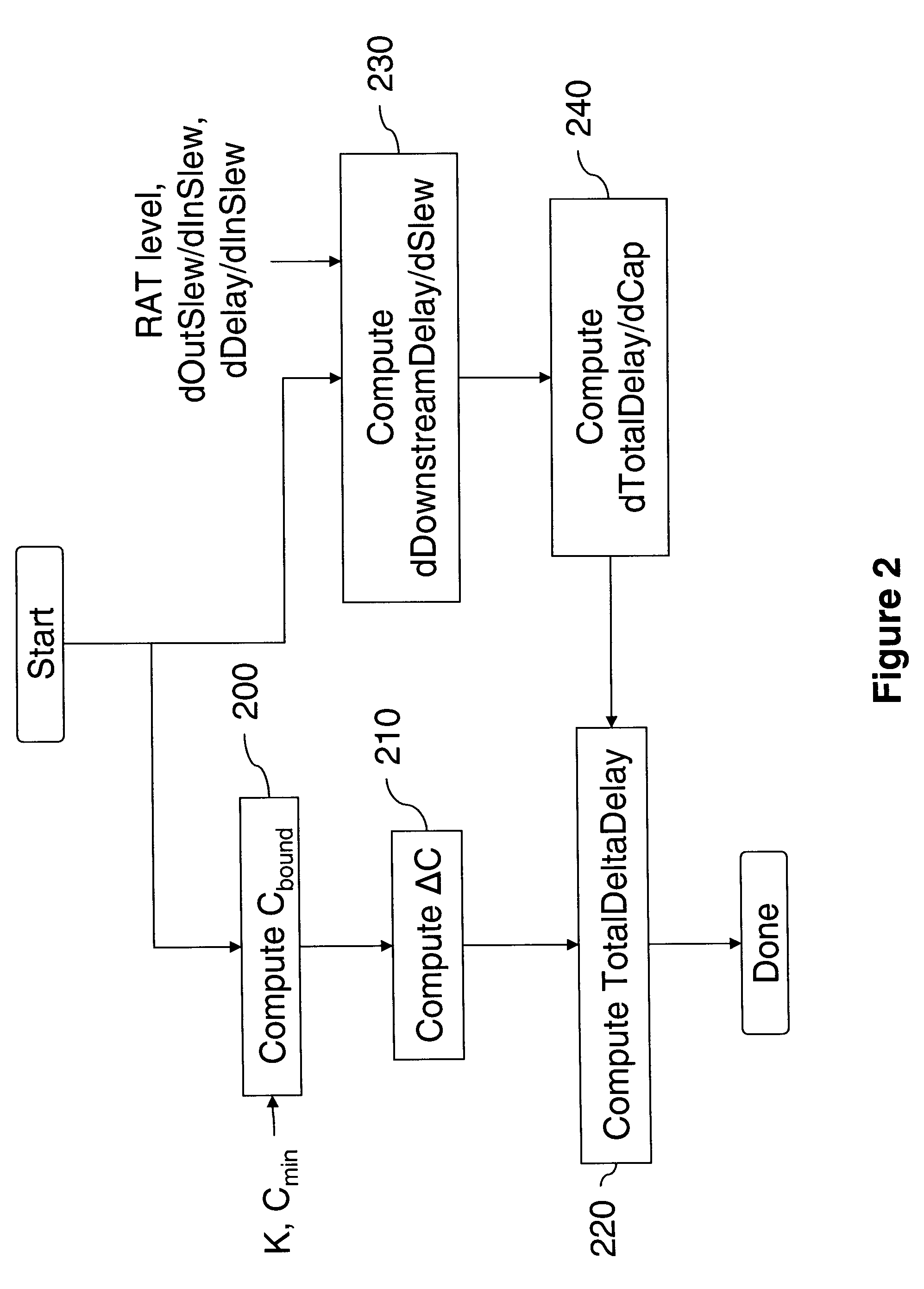Method for optimizing an unrouted design to reduce the probability of timing problems due to coupling and long wire routes
a technology of unrouted design and optimization method, which is applied in the direction of cad circuit design, program control, instruments, etc., can solve the problems of difficult and expensive incremental update of the impact of certain effects, electrical violations, failure of signals to meet timing, etc., and achieve the effect of decreasing the totaldeltadelay and increasing the slack
- Summary
- Abstract
- Description
- Claims
- Application Information
AI Technical Summary
Benefits of technology
Problems solved by technology
Method used
Image
Examples
Embodiment Construction
n the principles of the invention
[0021]FIG. 1 is a flowchart illustrating a timing closure process embodying the inventive method.
[0022]FIG. 2 is a flowchart illustrating the computation of a TotalDeltaDelay value for a net.
[0023]FIG. 3 is a plot of Cactual versus Cestimate for a collection of nets.
[0024]FIG. 4 is a flowchart illustrating the computation of K and Cmin values used to compute Cbound.
[0025]FIG. 5 is an exemplary circuit to which the inventive method is applied.
DETAILED DESCRIPTION OF PREFERRED EMBODIMENTS
[0026]The present invention and the various features and advantageous details thereof are explained more fully with reference to the non-limiting embodiments that are illustrated in the accompanying drawings and detailed in the following description.
[0027]The present inventive method computes before routing a change in delay, hereinafter referred to as TotalDeltaDelay that could reasonably be expected to occur due to coupling, long wire routes, or other characteristics...
PUM
 Login to View More
Login to View More Abstract
Description
Claims
Application Information
 Login to View More
Login to View More - R&D
- Intellectual Property
- Life Sciences
- Materials
- Tech Scout
- Unparalleled Data Quality
- Higher Quality Content
- 60% Fewer Hallucinations
Browse by: Latest US Patents, China's latest patents, Technical Efficacy Thesaurus, Application Domain, Technology Topic, Popular Technical Reports.
© 2025 PatSnap. All rights reserved.Legal|Privacy policy|Modern Slavery Act Transparency Statement|Sitemap|About US| Contact US: help@patsnap.com



